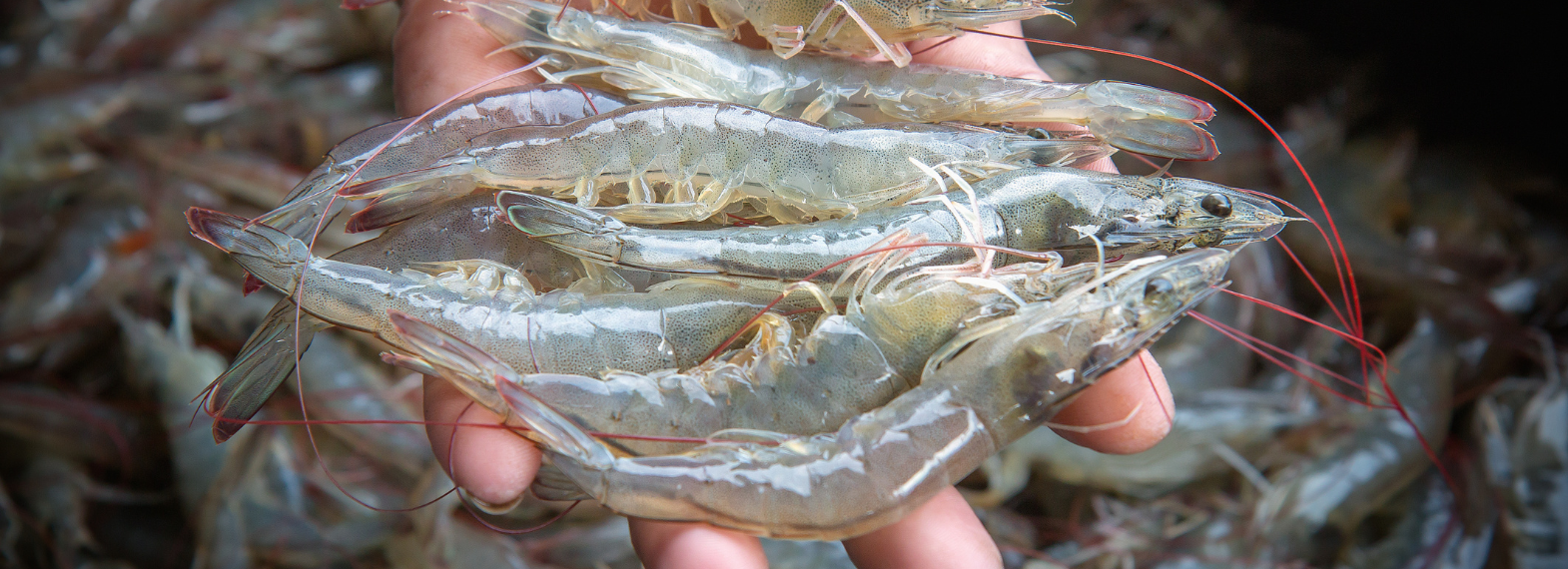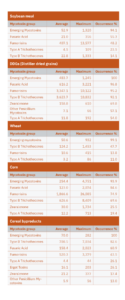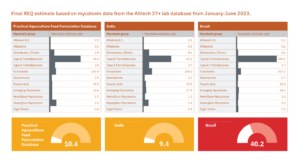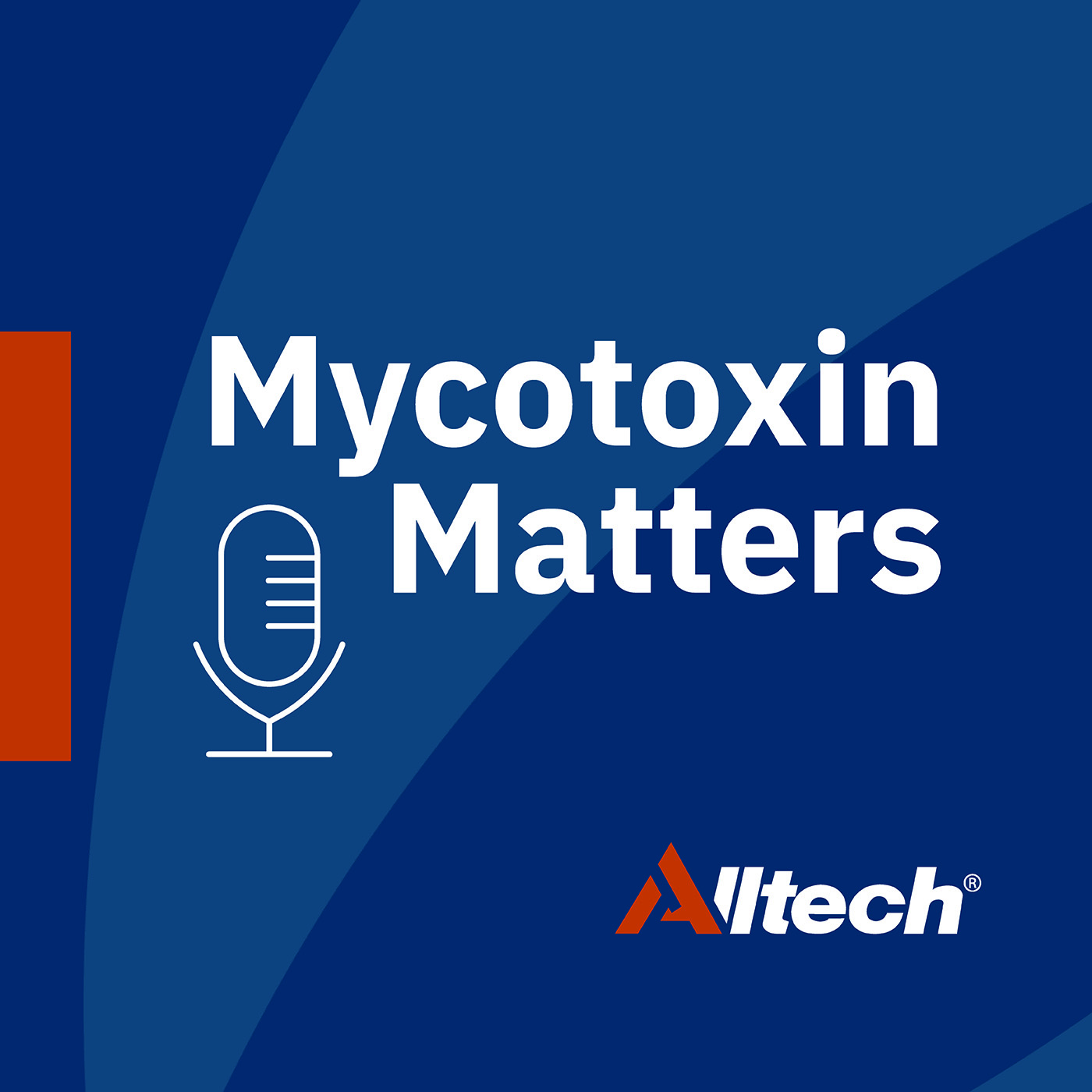Keep ahead of the threat
Stay up to date with the latest mycotoxin information by signing up to our newsletter

Assessing the risk: The mycotoxin presence in shrimp feed in 2023
Author: Dr. Vivi Koletsi, Global Aqua Technical Support, Alltech Mycotoxin Management
Pacific white or whiteleg shrimp (Litopenaeus vannamei) was the top aquatic species produced in 2020, reaching 5.8 million tonnes and accounting for approximately 12% of total aquaculture production (FAO, 2022). Shrimp is cultured via intensive operations in East and Southeast Asia and Latin America to supply mainly the high-income markets in North America, Europe and Japan.
As a high-value aquaculture species, shrimp have traditionally required high-protein diets based on fishmeal sourced from wild-caught, low-trophic fish species. However, the high prices of limited fishmeal supplies were restricting the growth of shrimp farming, and research has focused on developing alternative plant, animal and single-cell protein sources (Chen et al., 2023). Among these alternatives, in the past two decades, plant protein sources have increasingly been used in commercial shrimp feed diets to substitute fishmeal. Many plant substitutes in shrimp feeds are meals, including soybean meal, cottonseed meal, rapeseed meal, peanut meal and sunflower meal. Others are cereals, including wheat, corn, barley, and their byproducts: corn gluten and wheat bran, and distillers’ dried grain with solubles (DDGS).
Mycotoxin identification in shrimp feed ingredients
The plant-based ingredients in aquafeed (including shrimp) recipes are associated with several nutritional limitations (e.g., amino acid deficiencies, poor palatability, low digestibility, and the presence of anti-nutritional factors). The high inclusion of plant-based ingredients has also increased the risk of introducing mycotoxins into the final feeds, leading to feed safety concerns in the aquaculture industry.
Under favorable temperatures and humidity levels, fungi produce mycotoxins on crops before harvest in the fields or after harvest due to poor storage conditions of ingredients and final feeds. The occurrence of mycotoxins in raw materials and aquafeed samples submitted by European locations between 2012 and 2019 and analyzed by liquid chromatography–tandem mass spectrometry (LC–MS/MS) by an Alltech 37+® lab was described in a published survey (Koletsi et al., 2021).
This study showed that 80% of tested wheat samples tested positive for at least one mycotoxin and in 63% of those more than one mycotoxin was found. At least one mycotoxin was found in 93% of analyzed corn samples and 88% of these multiple mycotoxins were detected. The average number of co-occurring was 6 mycotoxins. In soybean meal at least one mycotoxin was detected in 87% of samples tested and 75% of these contained multiple mycotoxins.
Now, we report the mycotoxin profiles in commonly used plant-based ingredients — soybean meal (n=85), DDGS (n=63), wheat (n=109), corn (n=247), and byproducts (wheat bran and corn gluten; n=23) in shrimp feeds. These samples were submitted globally to the Alltech 37+ lab between January and June 2023, analyzed with LC–MS/MS for up to 54 individual mycotoxins, and categorized. Regardless of the ingredients, all tested samples were positive for at least one mycotoxin, and mycotoxins co-occurred in most. The results are shown in Table 1, mycotoxin groups with occurrence above 10%.

Table 1: The most frequent mycotoxin groups (occurrence > 10%) in plant-based ingredients commonly used in the shrimp feeds with their average and maximum levels (ppb)
What stands out most from the results in Table 1 is the high frequency (94–100%) of “emerging” mycotoxins in all tested ingredients. These emerging mycotoxins are neither routinely detected nor legislatively regulated, but their incidence is rapidly increasing. The submitted samples were analyzed for the following emerging mycotoxins: enniatin A/A1, enniatin B/B1, beauvericin, moniliformin and alternariol. Many more fungal metabolites would fall into the category but were not analyzed. Among the emerging mycotoxins, moniliformin was detected in 94% of DDGS samples, and enniatins were the most frequent in all other tested ingredients, at levels above 60% and up to 94%. Corn was the ingredient with the highest average (254.4 ppb) and maximum (4,751 ppb) concentration of emerging mycotoxins, although there are no regulatory/recommendation limits about these toxins.
Next to the emerging mycotoxins, fusaric acid, fumonisins (mainly represented by fumonisin B1), type B trichothecenes (mainly represented by deoxynivalenol), type A trichothecenes (mainly represented by T-2 toxin), and zearalenone were other highly present mycotoxin groups in the tested feed ingredient samples. For example, in corn, the maximum concentrations of type A (713 ppb) and type B (8,049 ppb) trichothecenes exceeded the current recommended limit in cereals intended for animal feeds: T-2 toxin at 500 and deoxynivalenol at 8,000 ppb (EC, 2006). Similar to emerging mycotoxins, there is no guidance level for fusaric acid, which had a high average (616.2 ppb) and maximum (3,221 ppb) concentration in DDGS samples.
Risk quantification in the shrimp feeds
The total risk of mycotoxin contamination in the shrimp feeds was estimated by using the Alltech® DIET™ Estimator tool. It combines the inclusion rates of individual plant-based ingredients in the diet with their mycotoxin contamination data. For the current risk estimation, a shrimp feed recipe from the Practical Aquaculture Feed Formulation Database (PAFF) was used as an example (soybean meal inclusion at 35% and wheat at 28%), and mycotoxin results derived from Alltech 37+ analyzed samples in the first half of 2023. In this case, the final Alltech risk equivalent quantity (REQ), was estimated at 10.4 ppb, which is considered moderate for shrimp (Figure 1, PAFF). Unique to Alltech, REQ is the measure of the cumulative presence of mycotoxins in ingredients or feeds. When shrimp formulations from India (Figure 1, India) and Brazil (Figure 1, Brazil) were analyzed with this tool, the REQs were estimated as moderate and high, respectively. Thus, in addition to the mycotoxin data in feed ingredients, the inclusion rates also matter for calculating the overall risk of contamination in shrimp feeds. The increased mycotoxin risk in the Brazilian diet can be attributed to the inclusion of ground corn.

Figure 1. Estimation of REQ based on the inclusion level of plant-based ingredients used in a shrimp feed.
Mycotoxins’ effects on shrimp productivity and health
Shrimp farming operations are located in tropical and subtropical regions, where climatic conditions for Aspergillus fungi are traditionally favorable, and thus aflatoxin B1 is likely present. Research has shown that aflatoxin B1 above 1 mg/kg reduces survival rate and growth, is bioaccumulated in tissues, and induces changes in hepatopancreas histopathology and biotransformation enzyme activities (Deng et al., 2020). Due to international trade and globalization, however, shrimp are potentially exposed to other mycotoxin groups than aflatoxins, as shown in Table 1. Deoxynivalenol (DON) levels at 0.5 mg/kg or higher impaired survival and growth performance, anti-oxidative defense systems, immune response, and intestinal and hepatopancreas histopathological damage (Xie et al., 2018). Similarly, T-2 toxin at 0.5 mg/kg and above affects growth, survival, digestive enzyme activities, antioxidant defenses and capacity, intestinal mucosal structures, and hepatopancreas histology of shrimp, mainly due to oxidative stress (Deng et al., 2017; Huang et al., 2019). Fumonisin B1 at 0.6–2 mg/kg reduces growth, muscle protein concentration, and immune response, induces histopathological changes in the hepatopancreas and may deteriorate shrimp muscle texture and decrease ice-storage life of shrimp, which could affect the shrimp’s acceptability to consumers (Mexía-Salazar et al., 2008; García-Morales et al., 2015).
Shrimp may be exposed to a mixture of mycotoxins and not to a single toxin, as the co-occurrence of multiple mycotoxins in plant-based ingredients revealed. To date, there is no available information on in vivo studies in shrimp testing the potential combined effects of mycotoxin mixtures that could be synergistic, additive or antagonistic. Only an in vitro study showed that the alkaline phosphatase in the hepatopancreas of farmed shrimp was more sensitive to a mixture of aflatoxin B1 and fumonisin B1 than to individual exposure (Pérez-Acosta et al., 2016). Finally, emerging mycotoxins and fusaric acid were among the most frequent mycotoxin groups in the feed ingredients, although they are not detectable in routine controls in feed mills, no regulatory/recommendation limits exist, and no research information is available (yet) about their effects on shrimp.
These insights highlight the necessity for a holistic mycotoxin management approach to protect the animals’ health and the industry from unexpected losses.
To know more about the tools and technologies that the Alltech® Mycotoxin Management program provides, visit www.knowmycotoxins.com/.








